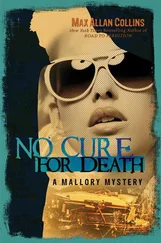She looked surprised. “Why are you smiling?” she asked.
“Do you know what my name means?” I said.
She looked confused.
“My name,” I said. “It’s a promise from God.”
DR. BRACKEN’S WORK WITH ME AS A PATIENT TOOK TWO YEARS. THE reader does not need to go through the laborious, frustrating and often confusing process of the reconstruction of the facts, feelings, fantasies and truth of my past that was Susan’s difficult job, a job she did, I think it’s fair to say, brilliantly. The narrative account you have read was what we discovered in our work. Susan used many unconventional techniques, including having me do research to confirm certain memories.
My uncle was patient and faithful to his guardianship of me. He paid for all that help. To be sure, he was often angry with me and for a time seemed to be permanently disappointed about my prospects. Susan got me back in school by the following term and, although I was not the compulsive student I had been, I did concentrate on the sciences. My uncle wasn’t thrilled that I chose psychiatry as my discipline, but he understood, as I assume anyone would, why I felt obliged to devote myself to the imperfect science that, finally, in the hands of a talented practitioner, had saved me. Susan helped me understand the danger of my illusions. I chose psychology knowing I was not a genius and that I could not rescue the world, but I confess I embarked on my career with the hope that I might return, in a small way, the gift of peace and forgiveness granted to me by all the men and women who had dared to attempt an answer to these child-like questions: Who are we? Why do we do what we do? And — most naive and beautiful of all — can we change?
PART TWO
Gene Kenny:
A Case History
CHAPTER ONE
Countertransference
WITHIN MINUTES OF MY FIRST INTERVIEW WITH GENE KENNY, I KNEW I didn’t like him. I was twenty-five. I had received my medical degree from Johns Hopkins, done my residency at Bellevue, and was completing my training under the supervision of Dr. Susan Bracken at her clinic in Greenwich Village. I had no hint that treating Gene would profoundly alter the course of my life, I had no inkling of the tragedy that would engulf him, but I knew I didn’t want him for a patient.
Gene wasn’t my first patient, not by a long shot. He was, however, among the very first I worked with under Susan’s guidance. She had opened a community mental health clinic in a brownstone on Tenth Street, off Sixth Avenue. Uncle and Susan both considered me to be overqualified for this low-rent venue, but I wanted to learn from her and I liked the fact that the free or moderately priced therapy offered would attract a different class of patient. The well-heeled, articulate, attractive, mild neurotic that is typified in the public mind by Woody Allen movies, it seemed to me, had plenty of talent at their disposal.
In 1977, the year Gene Kenny began treatment, the clinic saw a wide variety of distress. Alcohol and drug addiction, wife and child abuse (and one case of husband abuse), a constellation of sexual disorders, crippling anxiety and chronic depression — all were plentiful, displayed by the diverse population of New York City, ranging from artists to Lower East Side gang members. What our patients had in common, with one exception, was lack of money. (The exception, an elderly woman, featured miserliness among her many anal-retentive attributes.) Of course schizophrenics also showed up, and a few people with problems I discovered were purely physical, but whose symptoms were first apparent in behavior — brain tumors, thyroid problems, certain kinds of migraines and one man with a collapsed lung. (He assumed his agonizing pain was psychosomatic. Not surprisingly, later on he did become my patient.) We referred those cases to Bellevue Emergency, as well as the schizophrenics, although we did see a few of the latter as outpatients.
Gene was fifteen. He had a full head of thick black hair, pale unhealthy skin, pouting lips, a strong chin, dark eyes, and a long skinny nose set slightly off center, like one of those Picasso Cubist faces. He looked European, although I must confess I don’t know what that means when, as a technical matter, everyone who isn’t black or Asian looks European. I guess what I mean is that his features were clearly not mixed. He seemed to be the child of generations of breeding from a specific region — Eastern Europe to my eyes. I was surprised when he opened his mouth and spoke in a thoroughly American way.
“They told me I was supposed to sit here,” he said from his slouched position in a chair. It was placed by the right wing of the desk. We were in one of two basement rooms for private sessions.
I had come from a group therapy session upstairs. It was eight o’clock, my last appointment of a twelve-hour day. I sat in the desk chair. “Hello, I’m Dr. Neruda.”
“Yeah,” he said. He averted his eyes with child-like shyness, a boy of eight, rather than the sullenness of an adolescent. “You’re Gene?”
He nodded. He rolled his full lips inward, between his teeth, and pushed them out, over and over, eyes intent on the surface of my desk. He appeared to be very nervous.
I had already read the preliminary interview, done by a New York University psychology graduate student interning for Susan. These were the facts: Gene was fifteen, an only child, in the ninth grade at the One Room School, a progressive private school in the Village, living with his parents on Lower Broadway. His father’s occupation was listed as photographer, and his mother’s as a copy editor working for a school textbook publisher. Since they qualified for free treatment, their income, at least on tax returns from the previous two years, was modest. (The private school was paid by his father’s mother. This could mean their income didn’t reflect their actual wealth; but Susan’s policy was first to decide if the patient deserved treatment and worry about payment later. If we took on Gene and discovered his grandmother was a millionaire, we would hope to be paid eventually. Anyway, this was less of an issue for me than for the other two staff therapists. I didn’t need a supplement to what Susan paid me.) At the bottom of the interview a paragraph stated he complained of sleeplessness, palpitations, loss of appetite, difficulty concentrating in school and that his mother had brought him in. She reported that Gene’s school had suggested they seek help; the school’s psychologist, a friend of Susan’s, had recommended us as a low-cost option. To relax him, I began with questions we both knew the answers to.
“Did your mother bring you?”
He nodded. “She’s waiting.”
“How old are you?”
“Fifteen.”
I went through a few more. Then, “So, what’s going on, Gene? Why are you here?”
“Mommy brought me,” he said.
I noted that he used a child’s term for her. “You don’t want to be here?”
He shrugged. His eyes roved the desk.
“Many people prefer to talk while lying on the couch. Would you like to lie on the couch?”
He frowned. His eyebrows were thick and jet black against the pallor of his skin. They were expressive and let me know he certainly did not want to. They crossed together in a frown, reared up in surprise, and then scanned the couch with an unmistakable look of fear and disgust.
I was about to tell him he could stay in the chair, when he said in a mumble, “Okay.” He hurried to the couch, never looking in my direction. He sat on the edge, head hanging, and waited, as if ready to be punished.
This was the moment when I experienced a strong feeling of dislike for Gene. It shocked me. I had never felt anything like it as a doctor. Both at the hospital and at the clinic, I had hostile, repulsive, sometimes physically deformed patients; patients who were trying and upsetting because of both their behavior and their appearance; patients who were virtually autistic or psychotic. I treated one schizophrenic who moved his bowels while I took his blood pressure. Certainly I hadn’t enjoyed many of those encounters but I never felt dislike, a complete lack of sympathy.
Читать дальше












